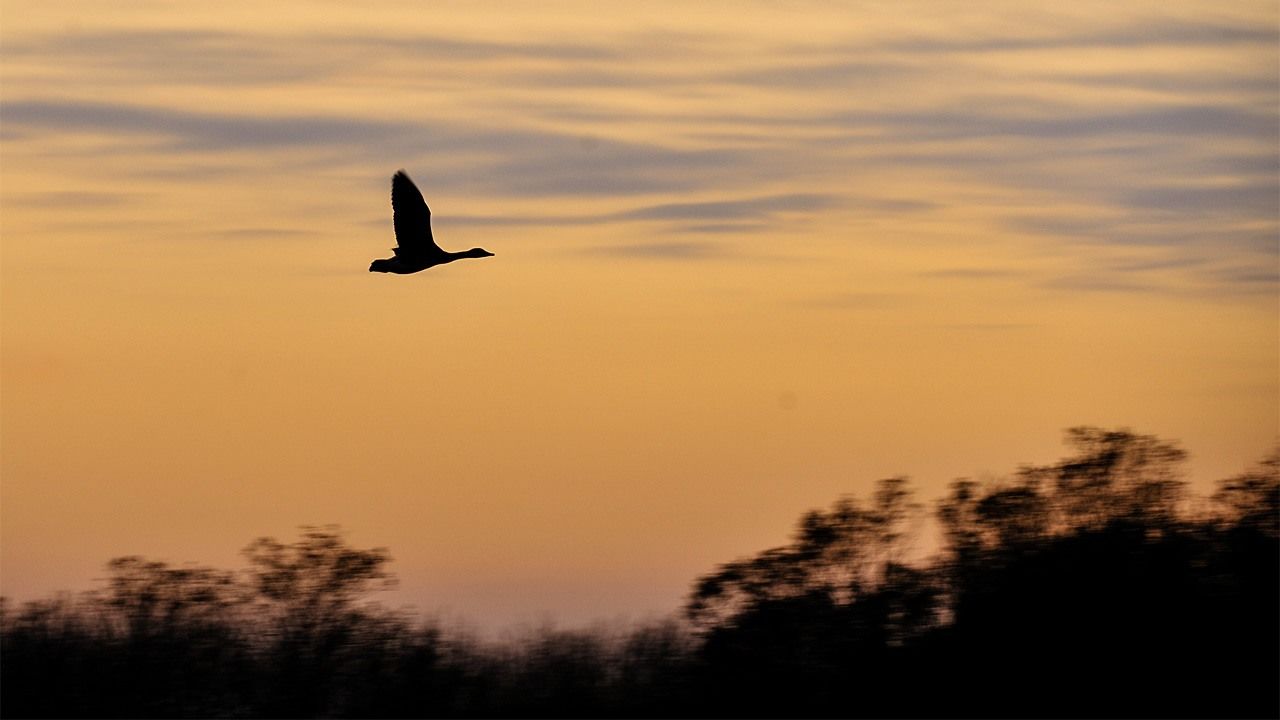
A Journey Through Japanese Haiku
The Lone Goose
Culture Environment Lifestyle- English
- 日本語
- 简体字
- 繁體字
- Français
- Español
- العربية
- Русский
紀の路にもおりず夜を行雁ひとつ 蕪村
Ki no ji ni mo / orizu yo o yuku / kari hitotsu
Not even landing
in Ki, a lone goose
flies through the night(Poem by Buson, written in 1776.)
In autumn, geese fly down from the north and over Japan. In waka and haiku, their cries are associated with both thoughts of love and reveries on autumn nights. The V formation they fly in as a group is compared to writing in the sky, and their exchanges are expressed as “calling out to friends.”
However, Buson’s haiku depicts a solitary goose, soaring through an autumn night, and not even setting down in Ki, which is an abbreviated form of Kishū (now Wakayama Prefecture). Why this particular place name? Buson explained to his followers that Kishū was the southern tip of Japan, and he imagined this goose seeking its friends as it traveled great distances over the ocean waves. Thus, the poem stresses the loneliness of the bird.
The haiku is likely to have been influenced by a poem about a lonely goose by the ancient Chinese poet Du Fu. After it disappears into the clouds, Du Fu writes of how he still seems to see it and to hear its sorrowful cry. Buson’s haiku also leaves a strong impression in conveying the goose’s forlorn feelings.
(Originally published in Japanese. Banner photo © Pixta.)
literature Yosa Buson haiku Japanese language and literature